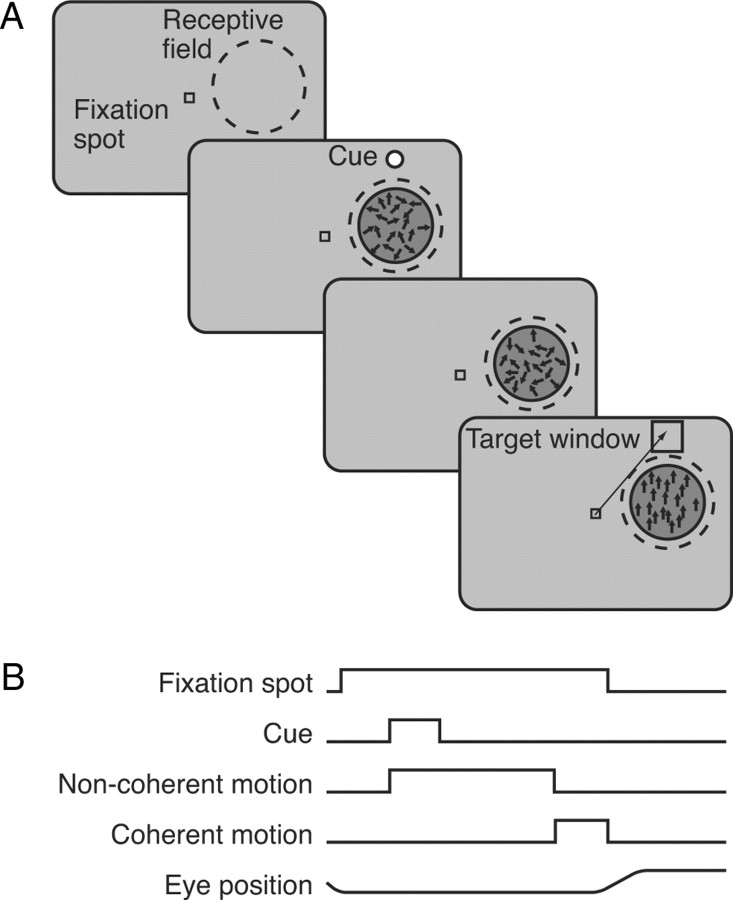Figure 1.
Motion detection task. A, Sequence of stimulus presentations during trials. The animal was required to fixate for 500 ms at the start of each trial. Next, noncoherent motion began, and a cue appeared that instructed the animal which direction of motion would occur on that trial and served as the target for a saccade later in the trial. After another 500 ms, the cue disappeared, and noncoherent motion continued for a random period. Finally, coherent motion began and the animal was rewarded if it made a saccade to the previously cued target within 825 ms. B, Illustration of the relative timing of fixation spot, cue, noncoherent motion, coherent motion, and eye position.

